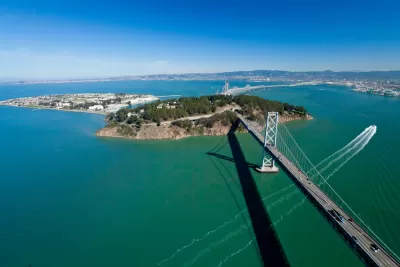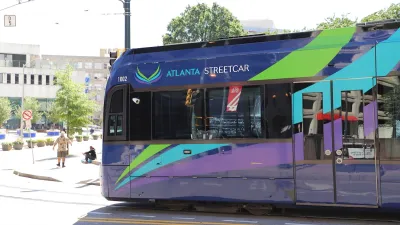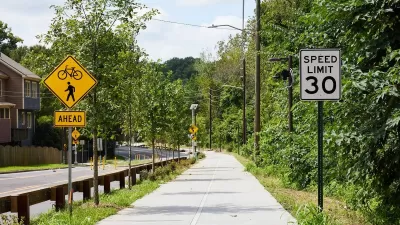Writing in the New York Times, Allison Arieff asks what happened to the great works of public infrastructure from years past that stand as today's monuments to America’s achievements.

The investment in infrastructure in America today is mostly spent on what Arieff describes as "deferred maintenance"—the road repairs, bolt replacements, etc. The bridges and tunnels and other infrastructure investments that really shaped a city seem to be a thing of the past, with stories about infrastructure largely focusing on cost overruns or the failure of existing construction.
Is the age of great infrastructure over? Perhaps not, as Arieff points out while focusing on Atlanta's BeltLine (the 22-mile transit greenway around the city of Atlanta) and the reinvestment and reimagination of the Los Angeles River—the concrete waterway that snaked through the city and has been largely ignored for decades.
Arieff places part of the responsibility for the lack of enthusiasm in new infrastructure at the feet of the policy peoples (including planners!) who are supposed to sell the benefits of such projects to the community.
…engineers, planners and policy makers tend to focus on wonky stuff like percentage of parkland per person. They’re awash in acronyms like V.M.T. (vehicle miles traveled), too reliant on planning terms like modeshare that don’t resonate with the general public. These things may be useful in measuring the metrics of a city, but they sure don’t get to the reasons people want to live there.
FULL STORY: What Happened to the Great Urban Design Projects?

Alabama: Trump Terminates Settlements for Black Communities Harmed By Raw Sewage
Trump deemed the landmark civil rights agreement “illegal DEI and environmental justice policy.”

Planetizen Federal Action Tracker
A weekly monitor of how Trump’s orders and actions are impacting planners and planning in America.

The 120 Year Old Tiny Home Villages That Sheltered San Francisco’s Earthquake Refugees
More than a century ago, San Francisco mobilized to house thousands of residents displaced by the 1906 earthquake. Could their strategy offer a model for the present?

Opinion: California’s SB 79 Would Improve Housing Affordability and Transit Access
A proposed bill would legalize transit-oriented development statewide.

Record Temperatures Prompt Push for Environmental Justice Bills
Nevada legislators are proposing laws that would mandate heat mitigation measures to protect residents from the impacts of extreme heat.

Downtown Pittsburgh Set to Gain 1,300 New Housing Units
Pittsburgh’s office buildings, many of which date back to the early 20th century, are prime candidates for conversion to housing.
Urban Design for Planners 1: Software Tools
This six-course series explores essential urban design concepts using open source software and equips planners with the tools they need to participate fully in the urban design process.
Planning for Universal Design
Learn the tools for implementing Universal Design in planning regulations.
Clanton & Associates, Inc.
Jessamine County Fiscal Court
Institute for Housing and Urban Development Studies (IHS)
City of Grandview
Harvard GSD Executive Education
Toledo-Lucas County Plan Commissions
Salt Lake City
NYU Wagner Graduate School of Public Service





























